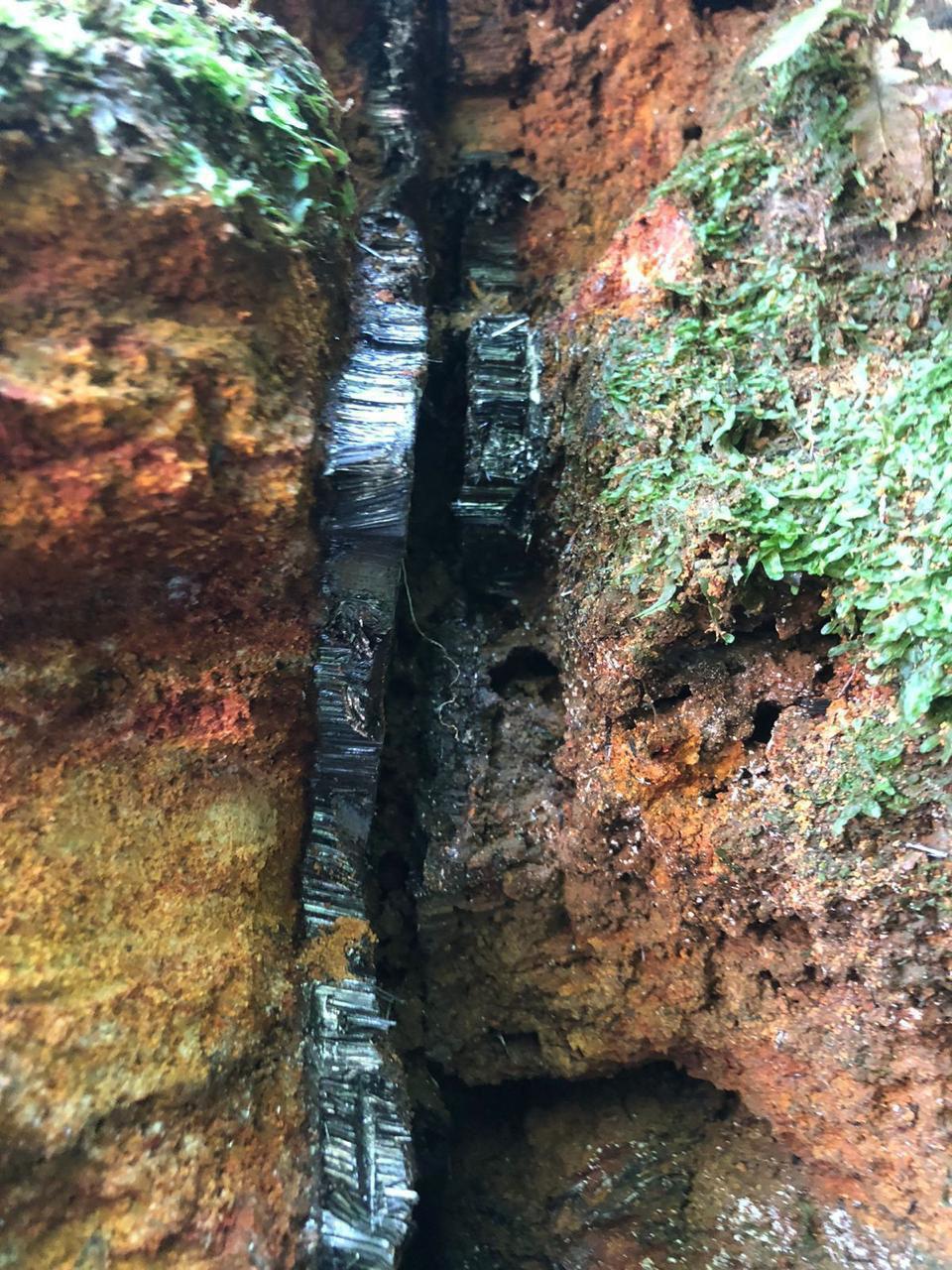Laying the Foundation: How the Precambrian Era Forged Vein Graphite
Published on October 21, 2025

This Image
This image shows a close-up geological formation featuring a prominent, dark, crystalline vein embedded within the surrounding rock. This depicts vein graphite within a fissure in the bedrock, illustrating the result of the geological processes described here where carbon-rich fluids crystallized under specific temperature and pressure conditions during the late Precambrian era. The image serves as a visual example of the high-purity graphite deposits Carbonatik sources, potentially from locations like Sri Lanka .
Setting the Stage for Vein Graphite Formation
The Precambrian era, spanning from the formation of Earth about 4.6 billion years ago to the beginning of the Cambrian period around 541 million years ago, encompasses nearly 90% of our planet’s history. This vast expanse of time saw the formation of Earth’s crust, the emergence of life, and the development of conditions necessary for the creation of vein graphite deposits.
Geological Timeline and Major Events
Hadean Eon (4.6-4.0 billion years ago):
- Formation of the Earth and Moon
- Development of the first solid crust
- Intense meteorite bombardment
Archean Eon (4.0-2.5 billion years ago):
- Formation of first continents
- Emergence of primitive life forms
- Development of photosynthesis by cyanobacteria
Proterozoic Eon (2.5 billion-541 million years ago):
- Oxygen accumulation in atmosphere (Great Oxidation Event)
- Formation of supercontinent Columbia (Nuna)
- Assembly and breakup of supercontinent Rodinia
- Snowball Earth episodes
- Emergence of complex multicellular life
Carbon Cycle in the Precambrian
The carbon cycle during the Precambrian era played a crucial role in setting the stage for vein graphite formation:
Early carbon sources:
- Volcanic outgassing of CO2
- Delivery of carbon-rich materials by meteorites and comets
Biological carbon fixation:
- Emergence of photosynthetic organisms around 3.4 billion years ago
- Gradual accumulation of organic carbon in sediments
Metamorphism of carbon-rich sediments:
- Burial and heating of organic-rich sediments
- Transformation of organic matter into graphite through metamorphic processes
Tectonic Activity and Metamorphism
The late Precambrian saw intense tectonic activity, crucial for the formation of vein graphite:
Supercontinent cycles:
- Assembly and breakup of supercontinents caused significant crustal deformation
- These processes buried carbon-rich sediments deep within the Earth
Metamorphism:
- High pressures and temperatures in the Earth’s crust transformed organic carbon into crystalline graphite
- Metamorphic fluids became enriched with this carbon
Formation of Carbon-Rich Fluids
The carbon-rich fluids that eventually formed vein graphite deposits were the result of several processes:
Devolatilization:
- As carbon-rich rocks underwent metamorphism, they released fluids rich in CO2 and CH4
- These fluids could dissolve additional carbon from surrounding rocks
Fluid mixing:
- Metamorphic fluids mixed with other crustal fluids, further concentrating carbon content
Temperature and pressure conditions:
- High temperatures (>750°C) and pressures (>5 kilobars) kept carbon in solution
The Sri Lankan Context
The geological history of Sri Lanka during the late Precambrian was particularly conducive to vein graphite formation:
Tectonic setting:
- Sri Lanka was part of a larger continental mass including parts of Africa, Madagascar, and India
- The region experienced high-grade metamorphism during the assembly of the supercontinent Gondwana
Rock types:
- The basement rocks of Sri Lanka, primarily high-grade metamorphic rocks like gneisses and granulites, provided the right chemical and physical environment for graphite formation
Fluid pathways:
- Tectonic activity created an extensive network of faults and fractures in the bedrock
- These pathways allowed carbon-rich fluids to circulate and eventually deposit graphite
The Final Steps: Vein Graphite Deposition
As the Precambrian era drew to a close, around 550 million years ago, the stage was set for the formation of vein graphite deposits:
Fluid movement:
- Carbon-rich fluids, superheated to temperatures exceeding 750°C and under pressures of 5 kilobars or more, were forced through fissures and cracks in the ancient bedrock
Cooling and depressurization:
- As these fluids moved through cooler rocks and pressure decreased, they became supersaturated with carbon
Crystallization:
- The excess carbon crystallized out of the fluid, forming the distinctive vein graphite deposits
Continued metamorphism:
- Ongoing geological processes further refined the crystalline structure of the graphite, resulting in its high purity and crystallinity
The Precambrian era, with its vast timescales and dramatic geological processes, laid the groundwork for the formation of vein graphite. The interplay of biological carbon fixation, tectonic activity, metamorphism, and fluid dynamics over billions of years culminated in the creation of these unique and valuable mineral deposits.
